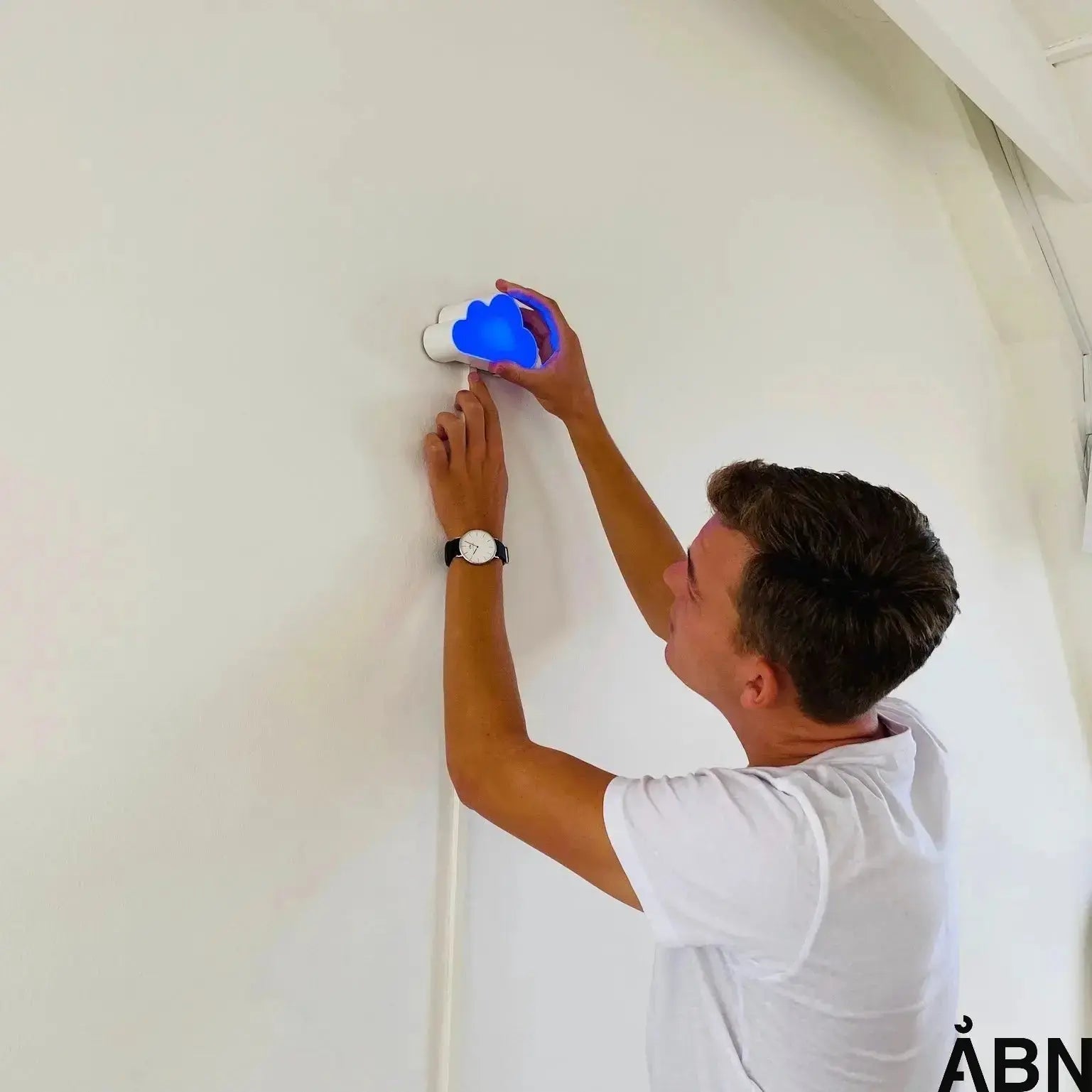Does dry air cause headaches?
Imagine a normal workday. You’re sitting at your desk, your coffee cup half full, and your tasks are piling up. But in the midst of your concentration, a sneaky headache starts to creep in. You’ve slept well, drank water, and eaten lunch – so what’s the cause? The answer could very well be: dry air. In offices, schools, and homes alike, low humidity is an overlooked cause of headaches and general malaise. But why is this so – and what can we do about it?
What is dry air – and why does it cause headaches?
Dry air occurs when the relative humidity falls below the recommended level – typically below 30%. When the air is too dry, it dries out our mucous membranes in the nose, throat and eyes. This can lead to irritation, fatigue and, not least, headaches. According to the National Research Centre for the Working Environment (NFA), employees in office environments with low humidity complain more often of headaches, fatigue and dry eyes. When the humidity is 40-50%, on the other hand, the complaints decrease significantly.
Headaches caused by dry air are not just a sensation – they are a physiological reaction. Our body tries to compensate for the low humidity by producing more fluid in the mucous membranes, but this can lead to congestion and irritation. It can be compared to trying to run a marathon with a dry sponge in your mouth – it quickly becomes uncomfortable.
Symptoms you should be aware of
In addition to headaches, dry air can cause a number of other symptoms that are often misinterpreted as stress or general fatigue. Here are some of the most common signs:
- Dry or itchy eyes
- Irritation in the nose and throat
- Fatigue and difficulty concentrating
- Static electricity in clothes and hair
- Increased sensitivity to dust and particles
These symptoms can greatly affect well-being and productivity – both for children in schools and adults in the workplace. That's why it's important to take indoor air quality seriously.
Why is dry air so prevalent in Denmark?
Denmark has a humid climate most of the year, so it may seem paradoxical that dry air is a problem. But indoors, the picture is different. In winter, when we heat our buildings, the humidity drops significantly. The cold outdoor air contains less moisture, and when it is heated indoors, it becomes relatively even drier. The result? An indoor climate with low humidity and potential discomfort.
Ventilation is important for a healthy indoor climate – but it does not solve the problem of dry air. In fact, ventilation in winter can worsen the situation because the cold air from outside is even drier. It is therefore necessary to think of other solutions if you want to avoid headaches and increase well-being.
What can be done to avoid headaches from dry air?
The first step is to understand and measure the humidity in your environment. Many are surprised when they see how low it actually is. At ÅBN, we have developed intuitive sensors and visual dashboards that make it easy to understand and act on indoor climate – like a weather forecast app, just for the indoor environment. You can read more about our approach to visualizing indoor climate here .
5 concrete actions you can take today:
- Measure humidity: Use a reliable sensor to gain insight into the current indoor climate. Knowledge is the first step to action.
- Increase humidity: Humidifiers can be an effective solution, especially in institutions and offices. However, they require control and monitoring so that the level does not become too high.
- Adjust ventilation: Consider demand-controlled ventilation that takes into account both temperature and humidity.
- Involve users: When employees and students understand the importance of indoor climate, they can contribute to improvements themselves. See our documentation on behavior change .
- Choose indoor climate solutions wisely: Technology shouldn't just be smart – it should be human. At ÅBN, we work to make indoor climate understandable and usable for everyone.
Indoor climate and health: More than just comfort
It's not just about avoiding headaches. Poor indoor air quality can also worsen allergies, asthma and respiratory diseases – especially in children and the elderly. According to Sundhed.dk , dry air can lead to irritation of the eyes, nose and throat as well as reduced well-being in general. It is therefore not just a comfort factor, but a matter of public health.
For parents concerned about their children's well-being at school, or for leaders and facility managers who want to create better working conditions, it is crucial to take indoor climate seriously. A healthy indoor climate is an investment in both people and performance.
How can ÅBN help?
At ÅBN, we believe that knowledge creates change. That's why we have developed solutions that provide insight and an overview of the indoor climate – in real time and at eye level. Our systems combine sensors with visual dashboards that make it easy to see when the humidity is too low – and what can be done about it.
One example is the Skyen – an elegant, intuitive sensor that shows the state of the indoor climate with colors and symbols, so that both children and adults can understand it without a technical background. In this way, the indoor climate becomes not just something you measure – but something you feel and act on.
A better indoor climate starts with insight
Whether you are a manager in a municipality, a facility manager in a company or a parent of a child in school, there is good reason to take dry air seriously. Headaches are not just a trifle – they are a signal from the body that something is wrong. With the right technology and knowledge, you can create an indoor climate where both well-being and productivity flourish.
Want to know more about how you can improve the indoor climate in your organization or home? Contact us here – we are ready with advice, data and solutions that make a difference.
FAQ
How do I know if dry air is giving me headaches?
If you frequently experience headaches, dry eyes, or irritation of the nose and throat, especially during the winter months or in certain buildings, dry air could be the culprit. Measure the humidity – if it’s below 30%, it’s likely a contributing factor.
What is the ideal humidity to avoid headaches?
The recommended relative air









